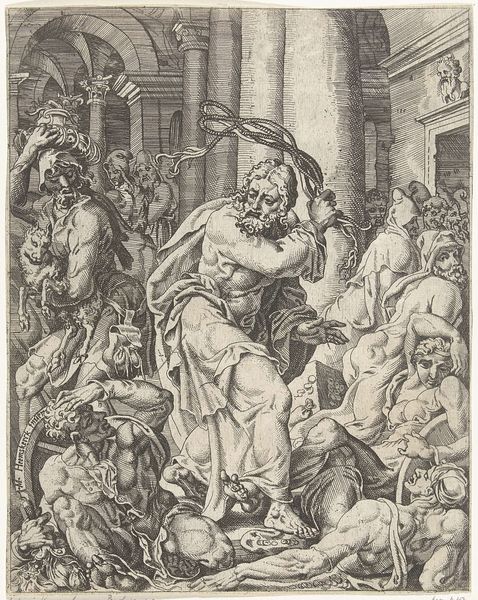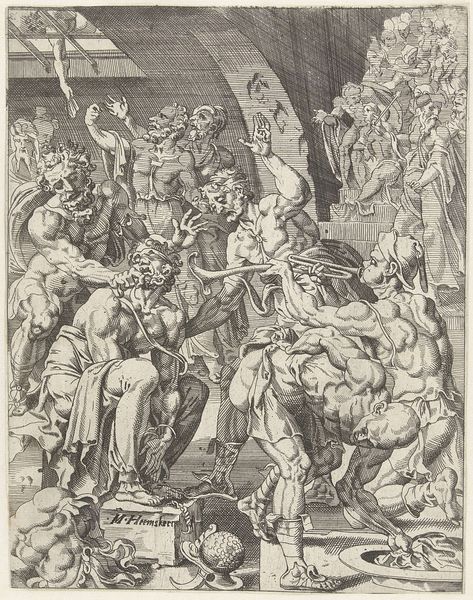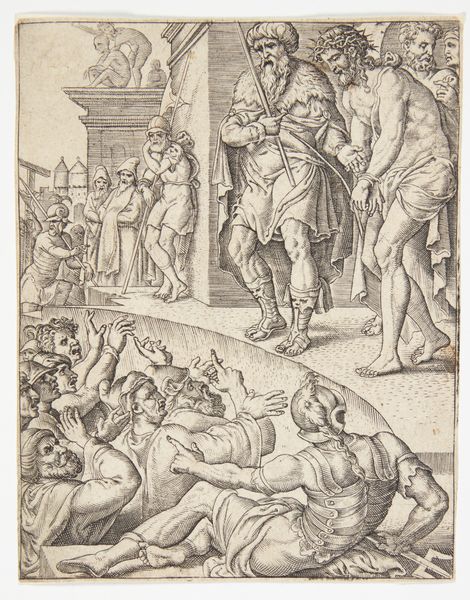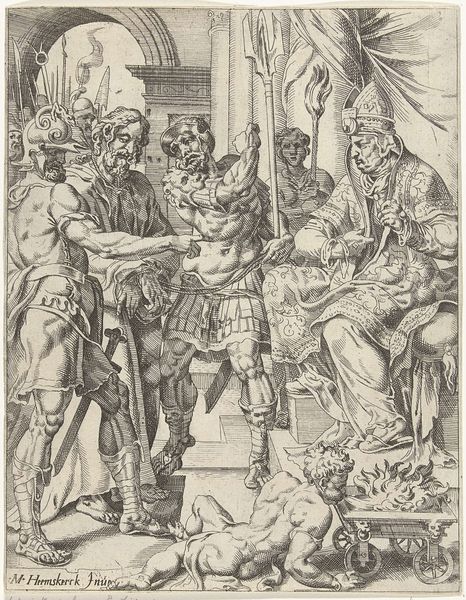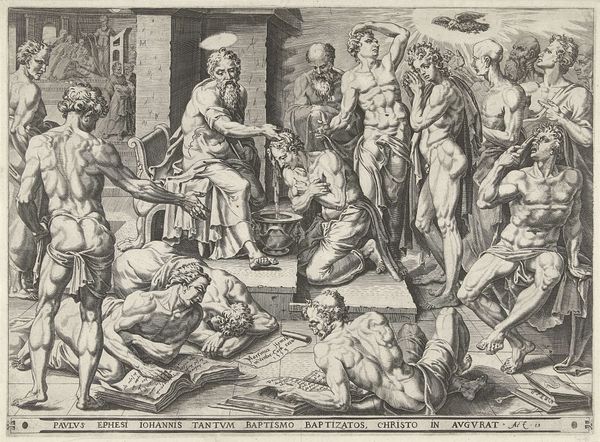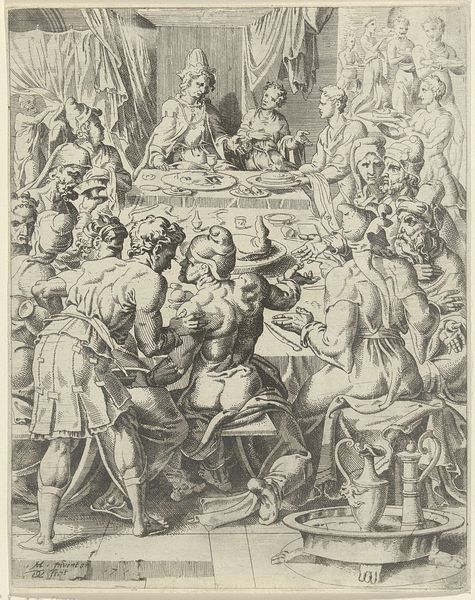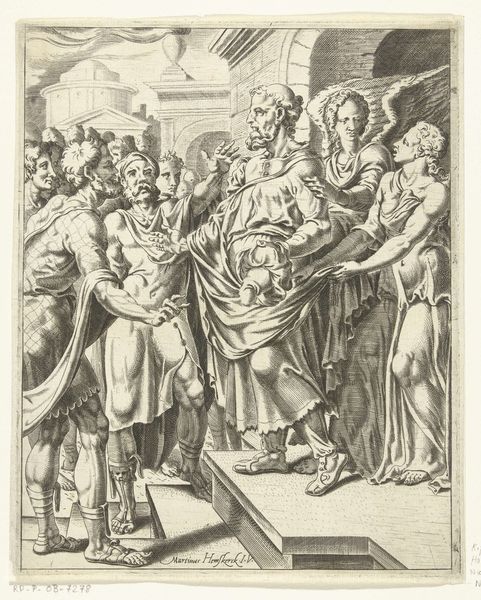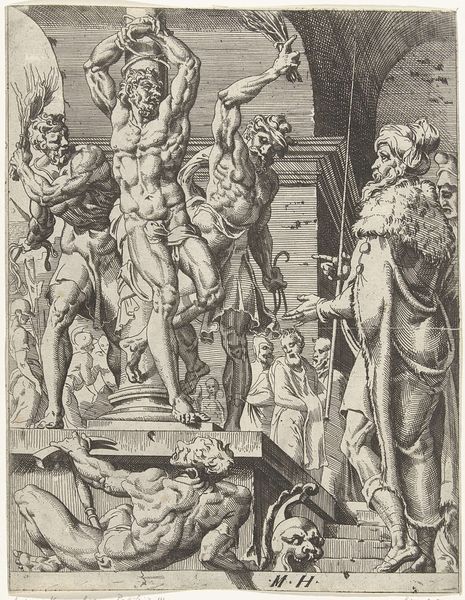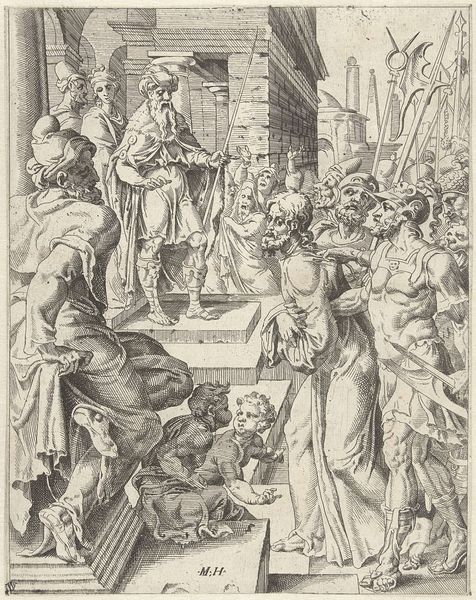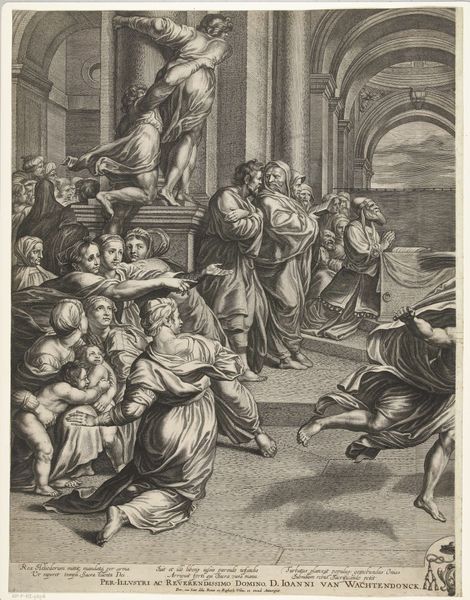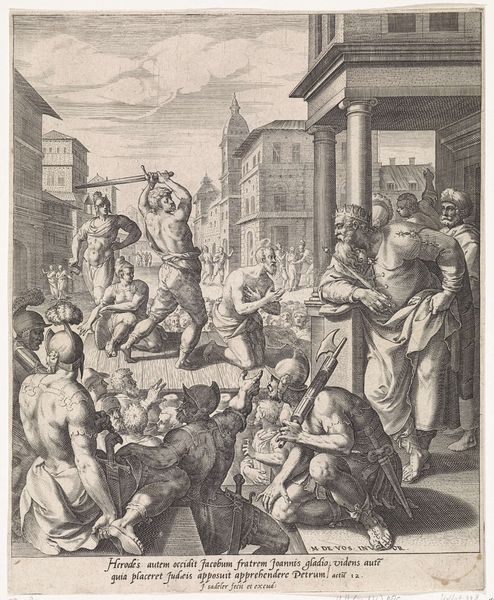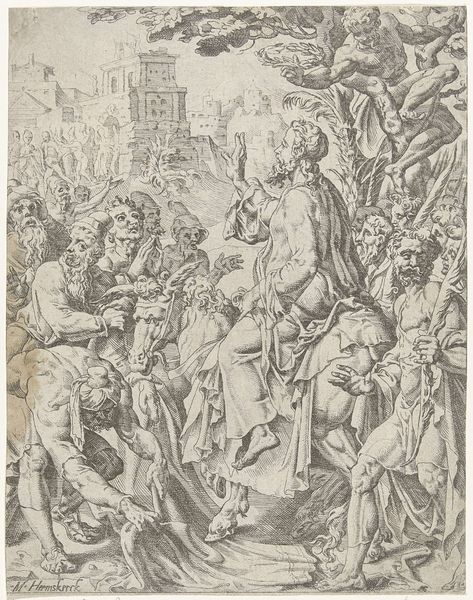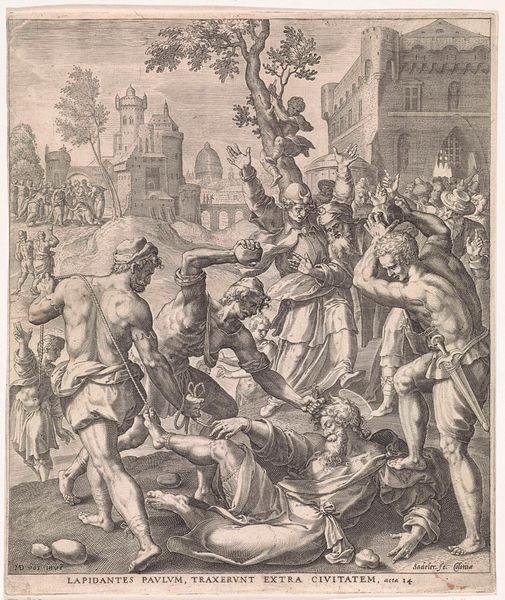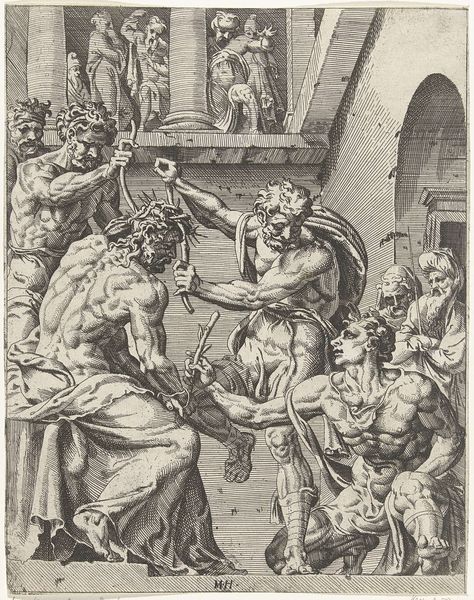
print, engraving
#
pen drawing
# print
#
pen illustration
#
pen sketch
#
figuration
#
line
#
history-painting
#
northern-renaissance
#
engraving
Dimensions: width 196 mm, height 245 mm
Copyright: Rijks Museum: Open Domain
Curator: This is Dirck Volckertsz Coornhert's "Ecce Homo," created in 1548. It's an engraving. Editor: The density of figures really hits me. It's chaotic, but somehow, within that chaos, there's a deep sorrow. You see it in the slumped posture of Christ and in the faces in the crowd. Curator: Yes, Coornhert masterfully captures that tension. This print would have circulated widely, serving as a stark reminder of the religious and political turmoil of the era. The northern Renaissance was heavily invested in depictions of Christ's passion as propaganda against Reformation. Editor: The symbolism is so heavy, you know? Look at how the crowd is arrayed – pointing, accusing. It mirrors, perhaps, humanity's own culpability. The composition directs your eye to those gestures. Are they condemning Christ, or implicating themselves? The figure on the stairs holding the head as if presenting him as the one responsible it truly horrifying! Curator: Precisely. And Coornhert was deeply enmeshed in those issues. He advocated for religious tolerance, and his prints like this one, while seemingly conventional depictions of biblical scenes, subtly critiqued the religious dogma of the time, becoming hugely sought after given the public discord around that topic. The engraving being easy to carry only pushed up their popularity at the time. Editor: Considering Coornhert's views on tolerance, it's interesting to view the image as not just a historical record but a symbolic indictment of humanity's tendency toward cruelty and judgement, and it truly embodies the terror experienced in the Northern Renaissance. That symbolism feels eternal. Curator: Right. Coornhert uses a historical event to comment on enduring societal problems and the consequences of fanaticism, placing accountability not merely on political rulers or the Pharisees, but all members of the crowd depicted, showing everyone contributed towards his sentencing. Editor: Thinking about it, there's this potent combination of historical weight and timeless meaning. This "Ecce Homo" makes me consider how images like these persist in the cultural memory. Curator: It certainly makes you think about the public role of art during times of political distress. Editor: A powerful commentary.
Comments
No comments
Be the first to comment and join the conversation on the ultimate creative platform.
